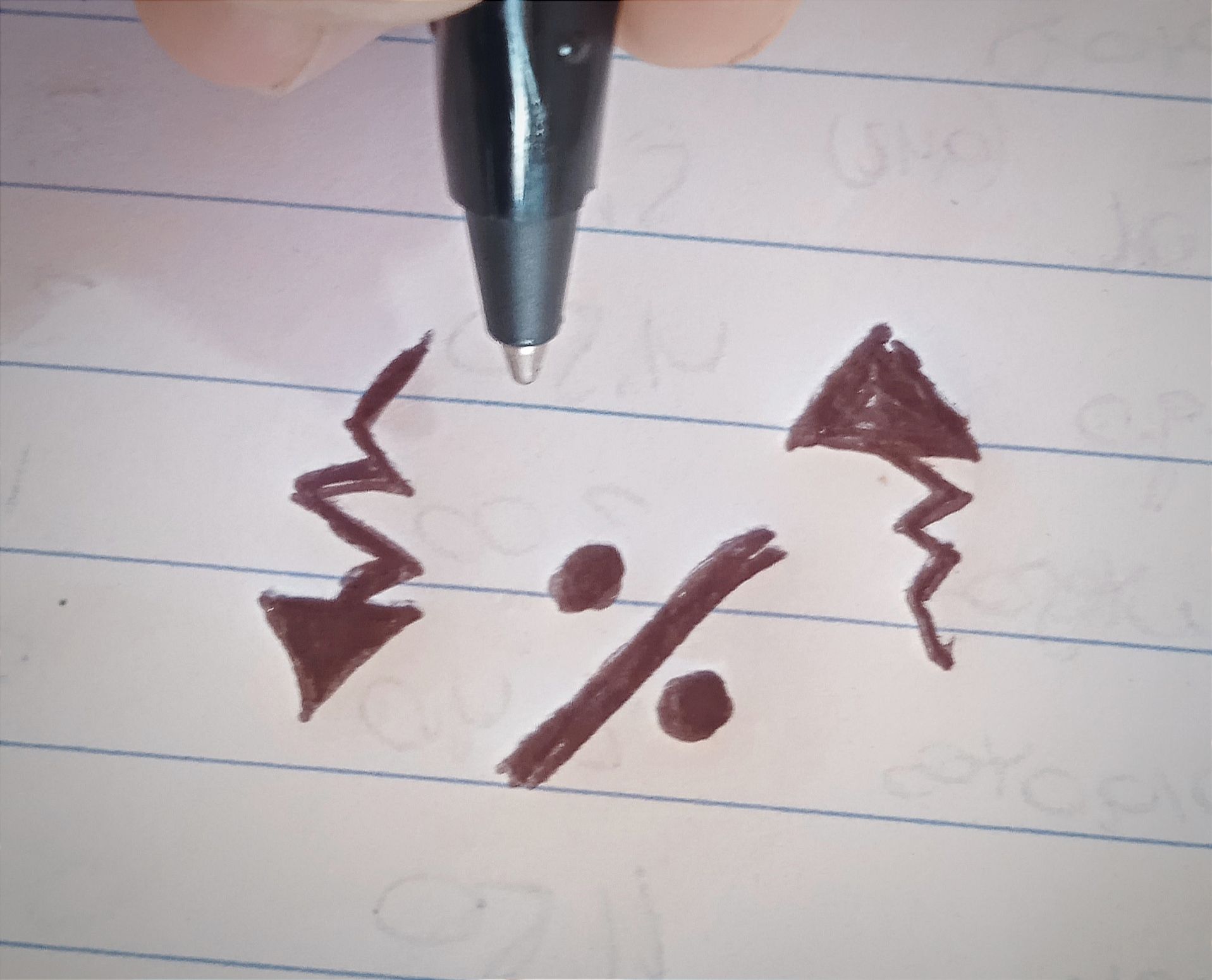
**Saludos Cordiales y Bienvenida**
Espero que se encuentren de la mejor manera en este bendecido día y que todos sus planes sigan marchando sobre ruedas con la motivación y el esfuerzo que cada uno de nosotros le colocamos a nuestro emprendimiento o proyecto.
Para mí, es un placer traerles un post más de "El pequeño aprendizaje" que voy obteniendo cada día y el cual quiero compartir con ustedes, porque puede que a alguno le resulte de interés aprender estos pequeños detalles, así como yo también puedo aprender de muchos de ustedes.
**¿Cuánto Debe Ser Mi Margen de Ganancia?**
Es un tema muy importante, como también delicado, ya que es el corazón de nuestro emprendimiento, es la finalidad, es por aquello que nos esforzamos, puesto que sin margen de ganancia no tendríamos éxito.
Debemos cuidar este tema porque si lo manejamos mal, nuestro negocio se puede ir a la quiebra. Pero también debemos medir qué tanta ganancia vamos a obtener. Así que vamos a analizar un par de puntos sobre esto.
**1: Analiza Tu Entorno**
Es vital que, a la hora de llevar tu emprendimiento, primero hagas un estudio de mercado de la zona donde estás. ¿Qué se requiere? ¿En qué bien o servicio puedes contribuir? Y que sea algo que no todo el mundo haga o, si muchas personas lo hacen, tú sepas en qué te puedes diferenciar.
Una de estas cosas puede ser el precio. Si tú analizas el mercado y ves que las otras personas que ofrecen el mismo servicio tienen un precio un poco elevado, pero tú, sacando cuentas, te das cuenta de que puedes hacer un descuento —por pequeño que sea—, pero que igual vas a obtener un buen margen, ya sabes que por ahí puedes tener una ventaja con respecto a los demás.
Ojo: No se trata de regalar tu trabajo ni de hacer competencia deshonesta; simplemente es dar un pequeño descuento o rebaja para así motivar a los clientes a que lleguen a ti.
**2: No Todo Tiene el Mismo Margen de Ganancia**
Es muy importante que tengas claro que no todos los productos tienen el mismo margen de ganancia.
Te hablo desde mi ejemplo: yo tengo una tienda de víveres o tienda por conveniencia, donde hay víveres, bebidas, golosinas y otras cosas más. Con previo estudio de mercado, debo darme cuenta de que para llamar yo más clientela, debo tener algunos productos que se llaman de primera necesidad lo más económico posible, a lo cual solamente le tengo un 10% de ganancia.
Pero eso solo es el gancho. Es decir, una persona viene y me compra un kilo de arroz. Al verlo un poco más económico, va a venir hacia mí. Luego de comprar ese arroz, lo más seguro es que va a necesitar alguna otra cosa para echarle a ese arroz, sea alguna salsa, algún aliño en polvo, plátanos, huevos, mortadela, bebidas gaseosas. Y en esta otra compra yo obtendría mayor margen de ganancia.
Por ejemplo, a las golosinas les puedo ganar desde un 25% a un 40%. Igual que las bebidas gaseosas, tengo un margen de ganancia de alrededor de un 30%.
Si tú tienes algún bien o servicio, puedes dar a aquellos productos que casi no se venden un mayor descuento o menor margen de ganancia para salir de ellos, y a aquellos que tienen mayor rotación y que la gente necesita más, puedes darles un poco de mayor margen para obtener más ganancias.
**3: Cómo Sacar el Cálculo Correcto del Margen de Ganancia**
Te voy a ser sincero: las palabras técnicas sobre este tema no las puedo decir, no las sé. Pero sí te voy a dar la fórmula matemática que vas a utilizar en tu calculadora para obtener el margen correcto de la ganancia al final del día. ¡Vamos al ejemplo!
A un producto tú le quieres ganar el 20% sobre el valor de la compra, tú usas esta fórmula matemática:
Por ejemplo: El producto te costó $1. Entonces, $1 entre 0.80 te daría que tendrías que vender el producto final a $1.25.

>🔸🔶**Warm Greetings**
I hope you are doing wonderfully on this blessed day and that all your plans continue to run smoothly with the motivation and effort that each of us puts into our ventures or projects.
It is a pleasure for me to bring you another post about "The Small Learning" that I acquire every day, which I want to share with you. Maybe someone will find it interesting to learn these small details, just as I can learn from many of you.
>**What Should My Profit Margin Be?**
This is a very important, yet delicate topic, as it is the heart of our business. It is the end goal; it’s what we strive for, since without a profit margin, we wouldn't succeed.
We must pay close attention to this because if we handle it poorly, our business could go bankrupt. However, we also need to measure how much profit we aim to obtain. So, let's analyze a few points on this matter.
>**1: Analyze Your Environment**
It is vital that, before starting your venture, you first conduct a market study of the area you are in. What is needed? What good or service can you contribute? And make sure it’s either something not everyone is doing, or, if many people are doing it, that you know how you can differentiate yourself.
>One of these factors can be the price. If you analyze the market and see that others offering the same service have a slightly high price, but after doing your calculations, you realize you can offer a discount—no matter how small—and still maintain a good margin, then you know you have an advantage over the competition there.
>Keep in mind: This is not about giving away your work or engaging in dishonest competition; it’s simply about offering a small discount or reduction to motivate clients to come to you.
>**2: Not Everything Has the Same Profit Margin**
It's very important to be clear that not all products have the same profit margin.
I’ll use my own example: I have a grocery or convenience store that sells groceries, drinks, sweets, and other items. Based on a prior market study, I must realize that to attract more clientele, I need to have some basic necessity products priced as economically as possible, for which I only take a 10% profit.
>But this is just the hook. That is, a person comes and buys a kilo of rice. Seeing that it's slightly cheaper, they will come to me. After buying the rice, they will most likely need something else to go with it, such as a sauce, some seasoning powder, plantains, eggs, mortadella, or soft drinks. And in this second purchase, I would obtain a higher profit margin.
For instance, I can earn anywhere from 25% to 40% on sweets. Similarly, I have a profit margin of around 30% on soft drinks.
If you offer a good or service, you can offer products that are slow-moving a greater discount or lower profit margin to clear them out. For items with higher turnover that people need more, you can assign a slightly higher margin to obtain more profit.
>**3: How to Calculate the Correct Profit Margin**
>I'll be honest: I can't provide the technical jargon for this topic, as I don't know it. But I will give you the mathematical formula to use on your calculator to get the correct profit margin at the end of the day. Let's look at the example:
>If you want to earn 20% on the cost of the product, use this mathematical formula:
>For example: The product cost you $1. So, $1 divided by 0.80 means you would have to sell the final product for $1.25.
🔸🔶te preguntarás: "¿Pero si 25 centavos no es el 20% de $1?". Bueno, fácilmente te digo: El producto te costó $1. Si dices que el 20% de $1 es $0.20 y vendes el producto a $1.20, al restarle a ese dólar con veinte el 20% de tu ganancia, te va a dar $0.96. Es decir, ¡te va a faltar 4 centavos para volver a reponer ese producto de $1! Porque una cosa es el 20% de la compra y otra muy distinta, el 20% sobre la venta final.
Reflexión Final
Luego les daré un post más claro sobre esto. Por ahora, espero que les haya servido esta reflexión y nuestro aprendizaje sobre el margen de ganancia.
Así que déjame en los comentarios qué piensas. Me despido con un fuerte abrazo. ¡Bendiciones para todos ustedes!


>🔸🔶You might ask, "But isn't 25 cents the 20% of $1?" Well, I'll tell you simply: The product cost you $1. If you say that 20% of $1 is $0.20 and you sell the product for $1.20, when you subtract your 20% profit from that one dollar and twenty cents, it gives you $0.96. In other words, you'll be missing 4 cents to replenish that $1 product! That's because 20% of the cost is one thing, and 20% of the final sale is quite another.
Final Thoughts
I'll post a clearer explanation of this later. For now, I hope this reflection and our learning about profit margins have been helpful to you.
So, let me know what you think in the comments. I say goodbye with a big hug. Blessings to all of you!

**Créditos:**
🟠**imágenes tomadas en mi teléfono redmi 9c**
🟠**Traducción de texto hecha en DeepL.com**
**Credits:**
🟠**images taken on my redmi 9c phone**
🟠**Text translation done at DeepL.com**

#entrepreneur
#aliento
#spanish
#personal-finances
#vision-board
#vidapersonal
#palnet
#creativecoin
#archon
Payout: 0.000 HBD
Votes: 214
More interactions (upvote, reblog, reply) coming soon.